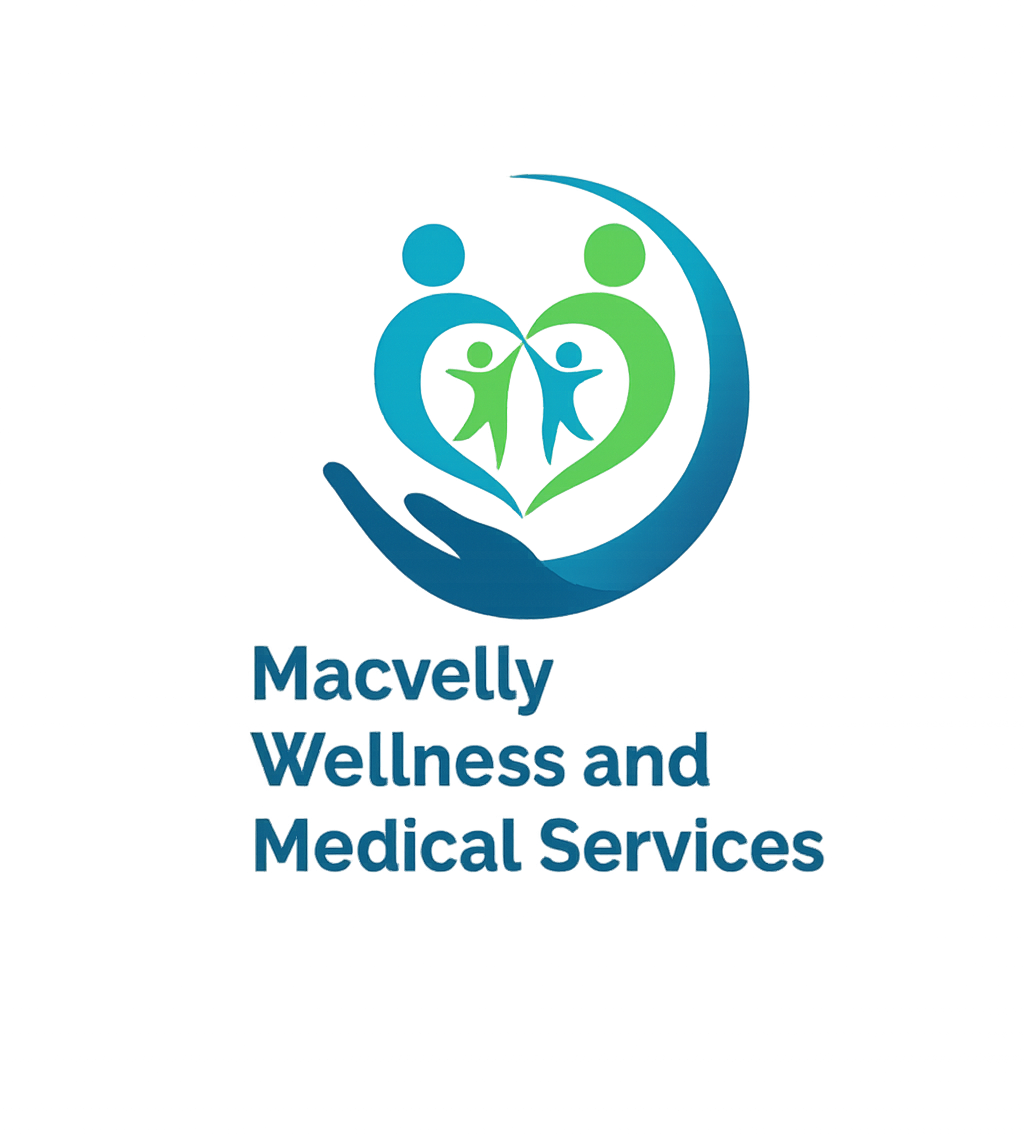Why Breast Cancer Awareness Matters Even More in Perimenopause for Women of Color
A professional, empathetic portrait of a confident Black woman (40s-50s) looking directly at the viewer. She is wearing a soft sweater, and a subtle pink ribbon is visible on her lapel, symbolizing breast cancer awareness. Her expression is strong yet composed, conveying resilience and advocacy.
Introduction: An Urgent Call for Equitable Awareness
October is Breast Cancer Awareness Month, a vital time to spotlight prevention, early detection, and support. However, for Women of Color, this awareness carries an even deeper urgency—especially during the complex hormonal shifts of perimenopause.
Perimenopause marks the years leading up to menopause, when estrogen and progesterone levels begin to fluctuate. These same hormones that once supported fertility also play a complex role in breast tissue health and cancer risk. Understanding how these changes intersect with racial disparities can make the difference between early detection and delayed diagnosis.
Estrogen exposure: Prolonged or unbalanced estrogen can stimulate breast cell growth. During perimenopause, irregular cycles can create periods of high estrogen without the balancing effects of progesterone.
Progesterone decline: Lower progesterone levels can lead to estrogen dominance, which has been linked to increased breast density and, in some cases, higher cancer risk.
For women navigating this stage—especially Women of Color, who already face disproportionate barriers to healthcare access, later-stage diagnoses, and lower screening rates—understanding these hormonal dynamics is crucial.
At Macvelly Wellness, we are committed to inclusive, evidence-based education that empowers women to take proactive control of their health. This means addressing not only biology but also the systemic factors—like healthcare access, cultural stigma, and awareness gaps—that influence outcomes.
By recognizing how perimenopause and breast cancer risk intersect, women can make proactive health choices—from scheduling mammograms and breast exams to adopting hormone-balancing lifestyle habits. Awareness isn’t just a month; it’s a movement toward equity, prevention, and empowerment.
A warm, close-up shot of three diverse women of color (midlife) seated around a table, gently layering their hands on top of one another. The focus is on the gesture of support, shared connection, and empathy during a serious conversation.
The Disparities Are Stark: Beyond the Numbers
While overall breast cancer incidence rates are slightly lower for Black women compared to White women, the outcomes reveal a devastating story of inequity—especially during the perimenopausal years when risk awareness and screening matter most.
Higher Mortality Rates: Black women are 40% more likely to die from breast cancer than White women, despite similar or even lower incidence rates. This gap is even wider in some U.S. cities, with mortality disparities reaching 60–70%.
Earlier Onset and More Aggressive Cancers: Research shows that Black women are often diagnosed with breast cancer at younger ages, typically in their 40s and 50s—right within the perimenopausal window. They also experience more aggressive subtypes, such as Triple-Negative Breast Cancer (TNBC), which tends to recur more often and is harder to treat.
Later-Stage Diagnoses: Women of Color—particularly Black and Hispanic/Latina women—are more likely to be diagnosed at later stages of the disease, when treatment options are more limited and outcomes poorer.
These statistics are not just numbers; they represent preventable losses and highlight the urgent need to close awareness and access gaps that directly affect survival.
Why Awareness Is Especially Crucial for Women of Color
Research consistently shows that Black women and other women of color are more likely to be diagnosed with aggressive breast cancers at younger ages, often during their perimenopausal years—a time when fluctuating hormones can mask or mimic early warning signs.
Later Diagnosis: Socioeconomic barriers, lack of awareness, cultural stigma, and limited access to routine screening all contribute to delayed detection. Many women do not receive mammograms until symptoms appear—by which point the disease may already be advanced.
Biological Differences: Certain subtypes, such as triple-negative breast cancer, occur more frequently in Black women and are more biologically aggressive. Combined with hormonal changes during perimenopause—like fluctuating estrogen and progesterone—this can increase breast density and complicate early detection.
Awareness, education, and culturally sensitive outreach help bridge this gap. Encouraging routine screening, breast self-awareness, and open conversations about hormonal health empowers women to catch changes early, when treatment is most effective.
A midlife woman of color (40s-50s) in a soft home or medical setting, thoughtfully examining a health pamphlet or information sheet. Her expression is focused and concerned but proactive, emphasizing self-awareness and the critical need for vigilance during perimenopause.
Unique Challenges Contributing to Disparities
Understanding the root causes of these disparities is key to overcoming them. For Women of Color, several interconnected factors can contribute to delayed diagnoses and poorer outcomes:
Systemic Bias and Mistrust in Healthcare: A history of medical racism and ongoing biases can lead to delays in diagnostic follow-up, dismissive attitudes from providers, and a justifiable reluctance to engage with the healthcare system.
Socioeconomic Barriers: Factors like lack of health insurance, limited access to high-quality healthcare facilities, transportation issues, and time off work for appointments can all contribute to missed or delayed screenings.
Cultural and Linguistic Barriers: For some communities, cultural norms around discussing illness or language barriers can impede open communication with healthcare providers and access to information.
Impact of Comorbidities: Women of Color often experience higher rates of other chronic conditions (e.g., hypertension, diabetes), which can complicate treatment decisions and overall prognosis.
Empowering Proactive Steps for Women of Color in Perimenopause
Despite these formidable challenges, empowered action and advocacy can significantly improve outcomes. Here’s what every Woman of Color should prioritize, especially during perimenopause:
Know Your Family History (and Advocate for Genetic Testing): Understand your family's cancer history, particularly first-degree relatives. If there's a strong history of breast or ovarian cancer, especially at younger ages, discuss genetic counseling and testing (e.g., for BRCA mutations) with your doctor.
Regular Clinical Breast Exams (CBEs): Beyond self-exams, regular CBEs by a healthcare professional can detect lumps that might be missed by self-examination.
Timely Mammograms & Supplementary Screening:
Adhere to recommended mammogram guidelines (typically annually from age 40).
If you have dense breasts or other risk factors, advocate for supplementary screening like ultrasound or MRI. Don't be afraid to ask for these.
Self-Advocacy in the Doctor's Office:
"If you feel something, say something"—and persist if you are not heard. Do not accept being dismissed.
Bring a friend or family member to appointments for support.
Prepare a list of questions and don't leave until they are answered.
Seek second opinions if you are unsatisfied with your care.
Prioritize a Healthy Lifestyle:
Nutrition: Focus on a plant-forward, anti-inflammatory diet.
Physical Activity: Regular exercise can reduce breast cancer risk and improve overall health.
Weight Management: Maintaining a healthy weight, particularly after perimenopause, is a proven strategy for reducing recurrence risk.
A serene midlife woman of color in a brightly lit, clean space, engaging in a gentle, mindful activity, such as a slow shoulder stretch or holding a nutritious green smoothie. The aesthetic is holistic and peaceful.
Conclusion: Macvelly Wellness for Equitable Midlife Health
Breast cancer awareness is not a one-size-fits-all conversation. For Women of Color navigating perimenopause, it is a call to heightened vigilance, empowered advocacy, and equitable care.
At Macvelly Wellness, we understand that health journeys are deeply personal—and often shaped by systemic realities. Our inclusive coaching and wellness services provide the personalized guidance, evidence-based strategies, and compassionate support women need to navigate perimenopause with clarity, confidence, and strength.
Perimenopause isn’t just a hormonal transition—it’s a turning point for lifelong health.
By combining awareness with action, women can protect their well-being and rewrite the narrative of midlife health. October’s Breast Cancer and Menopause Awareness Month reminds us that early action saves lives—and it starts with each of us.
Takeaway: Check your breasts monthly. Prioritize your screenings. Choose balanced living and self-care that supports your hormones and heart.
Call to Action: Follow Macvelly Wellness for more evidence-based insights on perimenopause, hormones, and women’s wellness. Let’s make awareness a daily habit, not just a yearly reminder.
This Breast Cancer Awareness Month, let’s commit to closing the disparity gap.
Book a free discovery call with Macvelly Wellness to create your personalized midlife health roadmap—because awareness is powerful, but action saves lives.





